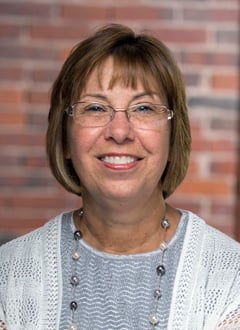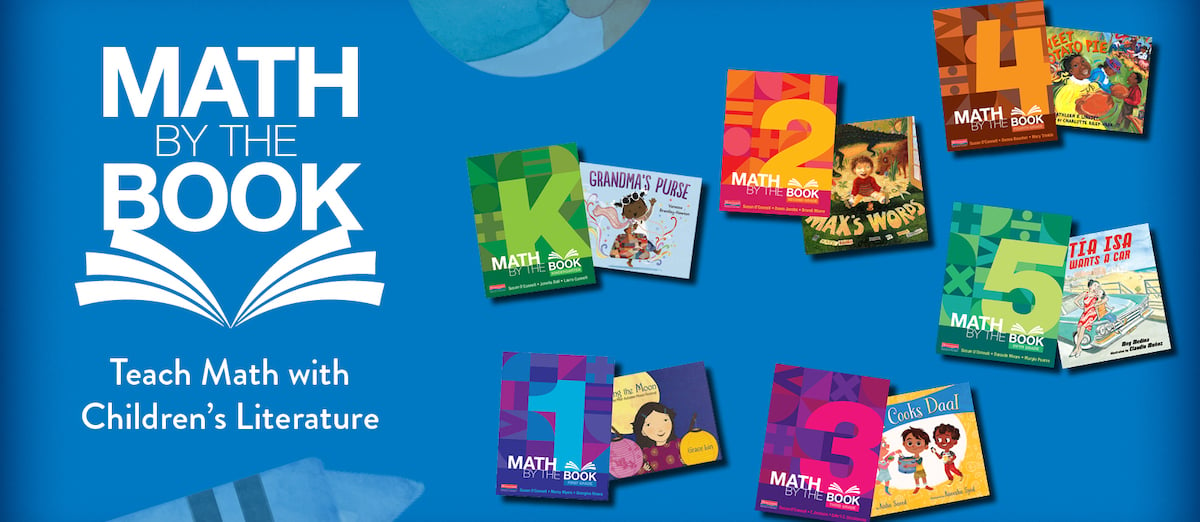
By Sue O’Connell, lead author of Math by the Book, and Danielle Moore, coauthor of Math by the Book: Fifth Grade
While many students can perform computations, some of those same students struggle when challenged to apply their computational skills to solve math problems.
Rather than relying on memorized procedures, the ability to solve problems requires them to understand operations and recognize the connection between contextual problems and mathematical procedures and algorithms. A deep understanding of operations allows our students to decide which operations and equations will lead them to problem solutions.
How do we help our students build this deep understanding of operations?
Through problem-solving, students develop operation sense, an understanding of the four operations (addition, subtraction, multiplication, and division), and the many different but related meanings these operations take on in real-world contexts. As students connect different meanings and relationships to the four operations, they more accurately and fluently apply these operations to real-world settings (Van de Walle, 2014).
In the Math by the Book series, students engage with the events, characters, and data in children’s literature to explore mathematics through context. Through word problems and investigations based on a story, students connect operations to problems in ways that make sense.
Developing Operation Sense in the Primary Grades
Primary students experience addition as “adding to” as they enjoy silly dinos joining a dance floor in One More Dino on the Floor by Kelly Starling Lyons, but after reading The Jingle Dancer by Cynthia Leitich Smith, students see addition as “putting together” as they think about the total number of tin jingles Jenna, a member of the Muscogee Nation, borrowed from four different women to sew on her dress for the powwow.
Young students explore subtraction as “taking from” as they hear about two cute boys popping sweet treats into their mouths in Ten Gulab Jamuns: Counting with an Indian Sweet Treat by Sandhya Acharya. Considering the different types of mangos in Too Many Mangos by Tammy Paikai prompts insights about a different subtraction situation as students compare types of mangos to determine if there are more green or ripe yellow mangos.
Through stories, students explore, discuss, and discover varied scenarios for the operations of addition and subtraction, and develop a deeper understanding of the operations.
Literature to Explore Multiplication and Division
While primary teachers embrace read alouds in math class, some upper-grade teachers may be hesitant to use literature to explore numbers and operations.
Upper-grade teachers might believe that their students are too old to engage with picture books. In the upper grades, teachers may also feel pressure to perform well on state math assessments. The pressure upper-grade teachers may feel leads some to focus their math instruction on memorizing procedures, facts, and formulas.
Literature can bring some much-needed meaning and context to these students’ math experiences.
Introducing Students to the Concept of Division
Introducing operations through a story context ensures that the lesson focus is on understanding the operation rather than just performing a calculation.
Around Our Way on Neighbors’ Day by Tameka Fryer Brown tells the story of a neighborhood block party. Neighbors come together to play games, listen to music, and enjoy the many types of food contributed by neighbors. As students use models to explore sharing the food, they are able to visualize division situations. Mr. Wong brings 10 sweet pork buns. How might they be shared? Students write their own division stories about their favorite foods and how they might be shared with different numbers of neighbors. Rather than initially focusing on right answers, students are modeling, talking about, and exploring a variety of division problems to build a strong understanding of the operation.
Extending Students’ Understanding of Multiplication
Initially, students explore multiplication as they think about equal groups and arrays, but later, they extend their understanding of the operation as they explore multiplicative comparison. While students are familiar with 3 groups of 5 or 3 rows of 5, they are now exploring the concept of 3 times as much as five. Through story situations, students are able to make sense of this new way of thinking about multiplication.
After reading How Tall? Wacky Ways to Compare Height by Mark Weakland, students explore silly comparisons from the story. Did you know that 1 penguin is the height of 6 popsicles? If a popsicle is 7 inches tall, how tall is a penguin? How might knowing the height of one object help you find the height of the other? Through engaging tasks that focus on using multiplication as a way to make comparisons, students extend their thinking about the operation of multiplication.
Making Sense of More Complex Expressions and Equations
Consider the story My Papi Has a Motorcycle by Isabel Quintero. Daisy loves riding through her community on the back of her Papi’s motorcycle. On her rides, she crosses paths with the individuals in her community, such as Mr. Garcia, the librarian, and Mr. Charlie, the postal worker. She sees the retail spaces like the Tortillería and Joy’s Market, the economic backbone of the place she calls home.
By exploring Daisy’s community, students begin to see the connections between the story situations and how expressions and equations are written to capture those situations. Students convert story situations into expressions as they show ”abuelita picked 3 baskets of 15 lemons and then used 11 lemons to make pies” as (3 × 15) -11.
Students ponder questions like: When might we use parentheses? How does the language of the problem impact how the expression is written? Rather than blindly following a rule, students learn how real-world situations and language affect mathematical expressions, and, as a result, they become stronger problem solvers.
The Power of Context
NCTM’s Principles to Actions: Ensuring Mathematical Success for All (2014) highlights the importance of students’ developing an understanding of concepts and procedures through problem solving. While we used to think of problem solving as the end point, something students did after they learned computations, we now understand that students can learn math skills and concepts through problem-solving experiences. Integrating children’s literature into our math teaching practice presents ongoing problem-solving opportunities and supports students’ conceptual understanding of the math operations they apply to solve problems.
Giving students a context, an imaginary or real-world situation to illustrate mathematical operations, has real benefits:
- It increases engagement as students care about the story-related problem
- It deepens students’ understanding of operations as they visualize and discuss different scenarios for the operations
- It strengthens their skills at creating expressions and equations to represent problem situations
- It gets students talking about their mathematical reasoning as they describe and justify their decisions about which operations to use or which equations or strategies might make sense to solve a problem.
The stories and investigations in the Math by the Book series help students make explicit connections between mathematical concepts and procedures. Through the different features in each chapter of the Math by the Book series (Explore, Investigate, Support, Enrich, Solve, Talk and Write, Practice, and Extend), students have multiple opportunities to make sense of the math while solving problems and discussing different approaches with their classmates.
Mathematics is not just the study of numbers. Mathematics is a way to use numbers and operations to describe the world around us. While a writer may use a verb to describe a character's actions, a mathematician can use an operational symbol to describe actions and relationships. Literature can open your students’ eyes to the mathematics all around them. Students begin to see that math is more than a series of calculations to be solved, but a tool to solve problems and make sense of the world.
Children's literature offers memorable opportunities to discuss mathematical ideas and connect those ideas to meaningful contexts. The new Math by the Book series is dedicated to teaching mathematics strategically through literature. Each book in this grade-by-grade resource features children's literature and a collection of activities and teaching strategies that uniquely address critical grade-specific skills and content.
References
National Council of Teachers of Mathematics. (2014). Principles to Actions: Ensuring Mathematical Success for All. National Council of Teachers of Mathematics. Reston VA: Author.
Van de Walle, J., Karp, K., Lovin, L.H., & Bay- Williams, J.M. (2014). Teaching student-centered mathematics: Developmentally appropriate instruction for grades 3-5 (2nd ed.). Pearson.
• • •

Sue O’Connell has years of experience supporting teachers in making sense of mathematics and effectively shifting how they teach. A former elementary teacher, reading specialist, and math coach, she is also a nationally known speaker and education consultant who currently directs Quality Teacher Development, an organization providing math professional development for schools and districts across the country. Sue is the lead author of the Math in Practice series and the Math by the Book series. 
Danielle Moore has over twenty years of experience working for diverse and urban school districts. As a classroom teacher, instructional coach, and currently as a mathematics consultant, Danielle works to ensure access to and equity in sound mathematical instruction for all. 
Related Reading

Presented by Sue O'Connell. Register Here!

